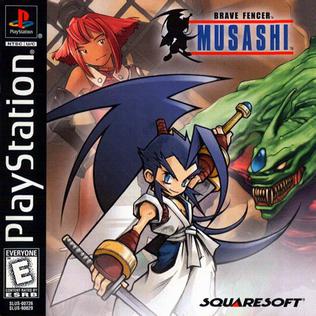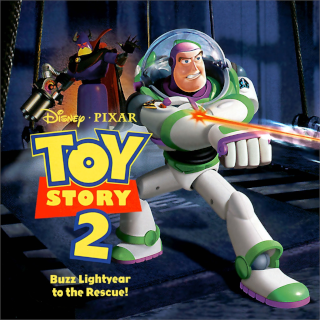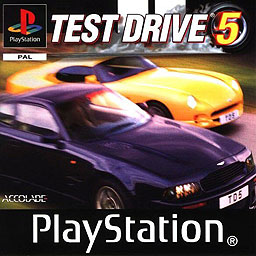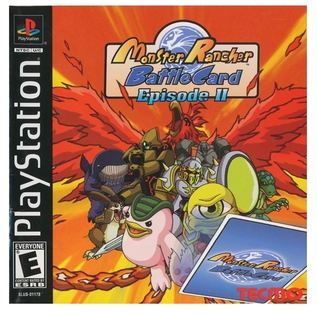
Brave Fencer Musashi is an action role-playing video game developed and published by Square in 1998 for the PlayStation home console. The game involves real-time sword-based combat in a 3D environment; it also features segments of voiced over dialogue and role-playing game elements such as a day-night cycle and resting to restore energy.

Millennium Soldier: Expendable, known in Japan as Seitai Heiki Expendable, and in North America as just Expendable, is a run and gun video game that was released by Rage Software for Microsoft Windows in 1999. It was later ported to the Dreamcast and PlayStation consoles. A remake of the game, entitled Expendable: Rearmed, was released for Android in 2012. It is in the format of a modern arcade game. The player starts with 7 "credits" and can continue until running out of credits. A second player can join the game at any time by pressing start.

Strider 2, released in Japan as Strider Hiryū 2, and then as Strider Hiryū 1&2, is a platform video game. It is developer and publisher Capcom's 1999 sequel to the original Strider. This game is the second sequel to Strider produced, following U.S. Gold's 1990 noncanonical Strider II, a game with which Capcom was not directly involved. The Capcom-produced Strider 2 makes no references to the Western-only Strider Returns/Strider II. The game was released for arcades in 1999 and was ported to the PlayStation in 2000.

Bloody Roar is a series of fighting games created by Hudson Soft and developed together with Eighting. The series has been published by multiple companies including Activision, Konami, SCEA, and Virgin Interactive. Konami holds the rights to the franchise after Hudson Soft was absorbed into the former company in 2012.

Bloody Roar 3 is a 2000 fighting arcade video game developed by Eighting and Hudson Soft. It is the first of the Bloody Roar series to appear on the Sony PlayStation 2.

Bloody Roar 4 is a fighting game developed by Eighting and Hudson Soft in 2003. It is the fifth and final of the Bloody Roar games as well as the second game in the series to appear on the PlayStation 2.
Fighter Maker(格闘ツクール, Kakutō Tsukūru) is a series of games for PlayStation consoles and Microsoft Windows. It features a robust character creation system, letting players even create animations. There are two versions of the games, Fighter Maker and 2D Fighter Maker.

Azure Dreams is a roguelike role-playing video game developed by Konami Computer Entertainment Tokyo and published by Konami for the PlayStation. A Game Boy Color game with the same name was developed by Konami Computer Entertainment Nagoya and released two years later. A spiritual sequel, Tao's Adventure: Curse of the Demon Seal, was released on the Nintendo DS in 2005.

Ace Combat 3: Electrosphere is a combat flight simulation video game developed and published by Namco for the PlayStation. The third game in the Ace Combat franchise, it was released in Japan in 1999 and in Europe and North America in 2000. Players control an aircraft and must complete various mission objectives, such as destroying squadrons of enemies or protecting a base from enemy fire.

Maken X is a first-person hack and slash video game developed by Atlus for the Dreamcast. It was published by Atlus in Japan in 1999, while Sega localized and released the game overseas in 2000. Gameplay has the Maken—a sentient sword-like being—"brainjacking" or taking control of multiple characters across a variety of levels; combat is primarily based around short-ranged melee attacks, with some characters sporting additional abilities such as ranged attacks.

Capcom vs. SNK: Millennium Fight 2000, also known as simply Capcom vs. SNK in international releases, is a 2000 head-to-head fighting game produced by Capcom originally released as a coin-operated arcade game for Sega's NAOMI hardware and later ported to the Dreamcast. It is the second game in the SNK vs. Capcom series and the first game in the series to be released for the arcade.

Toy Story 2: Buzz Lightyear to the Rescue! is a 1999 platform game developed by Traveller's Tales and published by Activision and Disney Interactive. Based on Disney/Pixar's 1999 computer animated film Toy Story 2, it was released for the Nintendo 64, PlayStation, Microsoft Windows, and Macintosh in late 1999, while a Dreamcast version followed in 2000. The computer versions were released under the title Disney/Pixar's Action Game, Toy Story 2. A different version, a side-scrolling platform game titled Toy Story 2, was also released for the Game Boy Color in 1999.

Test Drive 5 is a racing game developed by Pitbull Syndicate and published by Accolade for PlayStation and Microsoft Windows in 1998.

Guilty Gear is a 2D fighting video game developed by Team Neo Blood, an Arc System Works production group led by Daisuke Ishiwatari, and published by Arc System Works. First released on May 14, 1998, for the PlayStation, it is the first installment in the series of the same name. Set in a world destroyed by a war between humans and bio-organic weapons called Gears, it follows ten fighters as they enter a tournament held to prevent resurrection of the Gears' leader. Its gameplay consists of one-on-one fights, a four-button attack configuration featuring special moves and instant kill techniques, as well as three different playable modes.

Super Puzzle Bobble, released as Super Bust-A-Move in Europe and North America, is a puzzle video game in the Puzzle Bobble series. It was developed by Taito, and released on November 27, 2000 by Acclaim Entertainment for the PlayStation 2, and by CyberFront and EON Digital Entertainment for Windows in 2001. It was later ported to the Game Boy Advance that same year, the Japanese version under the name Super Puzzle Bobble Advance. It was re-released in Japan for the PlayStation 2 in 2004 as part of Super Puzzle Bobble DX, which is Volume 62 of the Japan-exclusive Simple 2000 Series. This compilation includes a few graphical enhancements.

Bloody Roar Extreme, or Bloody Roar: Primal Fury as it is known outside of its Japan release for the GameCube, is a fighting game developed by Eighting released in 2002 for the Nintendo GameCube. It was later ported to the Microsoft Xbox under the original moniker of Bloody Roar Extreme in 2003.

Bloody Roar known as Bloody Roar: Hyper Beast Duel in Europe and Japan, is a fighting video game originally developed by Raizing as an arcade game. It was later adapted for the PlayStation by Hudson Soft and published by Sony Computer Entertainment for the PlayStation. The arcade version was released in July 1997 and was titled Beastorizer in North America. The PlayStation version was released in Japan on November 6, 1997, in North America and in Europe in March 1998.

JoJo's Bizarre Adventure is a fighting video game developed by Capcom based on Hirohiko Araki's manga of the same title. The game was developed by the same team who was responsible for the Street Fighter III series.

Street Fighter EX3 is a 2D head-to-head fighting game with 3D graphics, developed by Arika and published by Capcom. It is the third and final console installment in the Street Fighter EX series. The game was first released on March 4, 2000 in Japan and on October 26, 2000 in North America as a launch title exclusively for the PlayStation 2, making it the first game in the Street Fighter series to be released on the console. It was subsequently released in Europe on March 2, 2001.

Monster Rancher Battle Card Episode II, known in Japan as Monster Farm Battle Card, is a video game developed and published by Tecmo for PlayStation in 2000. It is the second and last game in Tecmo's Monster Rancher Battle Card series, featuring a card game incorporating the popular characters from the Monster Rancher series.




















